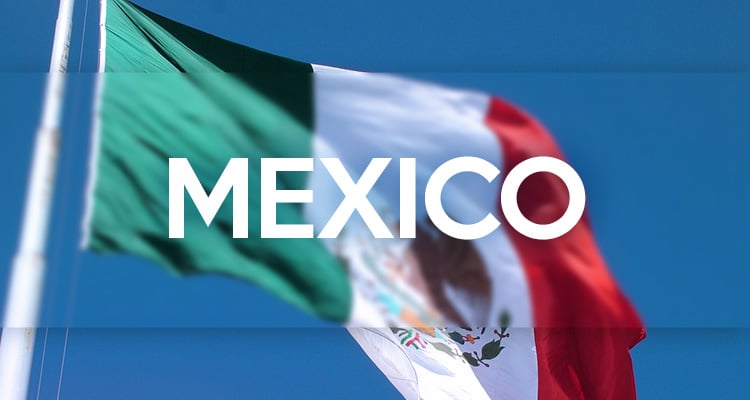There is a huge debate about which country rules outsourcing. Usually, the two major contenders are India and the Philippines.
I myself was born and raised in the Philippines, so it’s pretty obvious which side I’m on, eh?
But I digress. The thing is, the answer to that question depends on who you ask. And no, I’m not just talking about whether you ask an Indian or a Filipino regarding whose country is better for outsourcing.
Actually, it’s about asking the right question. So, you see, it’s not so much about which country is the best for outsourcing. Rather, it’s a matter of which country is the best for YOUR outsourcing needs.
Now, let’s take a look at the top half-dozen countries for outsourcing last year and what they each have to offer. In no particular order, they are:
1. India

Lots of people still think of this country when they hear the word “outsourcing,” and with good reason.
India is the second biggest country in the world, population-wise. Thus, it’s a great place for sourcing inexpensive labour. Currently, it remains the leading country for outsourcing tech support and IT-related services. Its cheap wages, top-of-the-line equipment, and relatively strong English proficiency all make it so.
If cost is the most important factor, then India’s probably your top choice for outsourcing. On the other hand, outsourcing to India can entail challenges like communication issues and cultural misunderstandings. So, if you plan to delegate complex tasks that rely on close cooperation and seamless communication, best look elsewhere.
2. The Philippines

While the Philippines is much smaller than India in terms of population, it can definitely give the latter a run for its money.
Because the Philippines was a US colony for over four decades, English proficiency is especially strong amongst the population. The culture is also quite Westernised as a result, so remote collaboration is generally easier. As with India, the lower wages and the exchange rate being in favor of the dollar (US or otherwise) adds to its attractiveness as an outsourcing hub.
The difference between time zones can be more of an issue for North American or European countries, but it’s quite manageable for their Australian counterparts. The real challenge lies in the sheer number of typhoons that buffet this country within a year.
On average, the Philippines deals with 20 storms annually. These often result in power outages and connectivity problems in the affected regions. Ergo, these can disrupt continuity at work, so it’s always best to have contingency plans when you outsource operations here.
3. Mexico

Okay, so this country is a bit of a dark horse because their English proficiency isn’t really that excellent.
However, its close proximity to the US makes it ideal for nearshoring outsourcing. The minimal time difference is also a huge draw and while Mexican remote workers aren’t known for their English proficiency, they know more than enough to get things done. And of course, there’s always the relatively low wages.
In some cases, the workforce’s bilingual skills also help. You see, an estimated 41 million US residents speak Spanish at home in the US alone.
Conversely, some Western companies often mention cultural differences as a significant challenge here. Mexican culture tends to be more laid back, so they often find themselves having to monitor progress at work a little more closely.
4. Argentina

Speaking of close proximity to the US, Argentina makes it to this list precisely because of that. It’s an increasingly popular choice for many American and Western European companies because real-time communication is more feasible here.
In addition, Argentina ranks the highest in English language proficiency across Latin America. The four-hour flight time from Silicon Valley to Argentina makes regular onsite meetings and project evaluation very much doable too. Thus, plenty of start-ups often keep this country in mind when selecting outsourcing options.
5. Ukraine

With its big talent pool of well-trained and experienced developers, Ukraine has been climbing steadily as a top outsourcing location. Since it’s in Eastern Europe, it offers the advantages of a similar time zone and relatively low labour costs. Some degree of synchronous communication is even possible for certain US companies, thanks to the overlapping time zones in some areas.
So, what’s the catch? Well, Ukraine isn’t part of the European Union. This means that they’re not required to meet the regulatory body’s high safety requirements. It also entails significantly higher trade barriers as compared to EU countries.
6. Poland

In comparison, Poland offers the same benefits that Ukraine does. Top-notch software developers in the region, almost 80,000 IT-related graduates every year, and the highest English proficiency in the area are just some examples. The difference, however, is that Poland is a member of the European Union.
Therefore, Polish outsourcing companies and remote workers comply with EU safety regulations. Hence, your project’s key details and data are safe if you outsource here.
But before you go and outsource your operations to Poland, bear in mind that they’re not exactly the cheapest option on this list.
These countries made it to the list for the merits they bring to the US and some Western European nations. However, I still think the Philippines is the hands-down best outsourcing choice for Australian entrepreneurs.
Remote Filipino talents simply have the language skills and competencies that most AU companies require. Then there’s the fact that the time difference isn’t that huge (although the cost savings certainly are).
Intrigued? Curious? Got questions? With more than a decade of experience in matching AU entrepreneurs with the right Filipino remote talents, Remote Staff’s got you covered.
Click here to call us or here to schedule a callback.
Serena has been working remotely and writing content for the better part of the last decade. To date, she's written for Pepper.ph and Mabuhay Magazine, among others, and has churned out more than a thousand articles on everything from The Basics of Stock Market Investing to How to Make Milk Tea-Flavored Taho at home. Hermits, aspiring hermits, and non-hermits with interesting project propositions may email her at serena.estrella10@gmail.com.
























 Zero Recruitment Fee
Zero Recruitment Fee